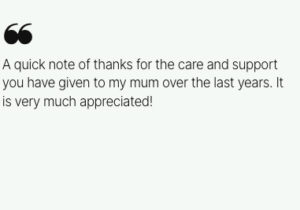Choosing care for a loved one is a practical decision and an emotional one. This post defines two common options, explains when each fits best, and gives a clear side-by-side comparison to help you decide.
What is Respite care?
Respite care gives short-term, temporary relief for a primary family caregiver. Services run from a few hours to several days or weeks. Respite visits can be scheduled regular weekly shifts, single-day breaks, or short stays after hospital discharge. The main aim is to support the family carer and to keep the person receiving care at home.
Ideal uses:
- A family carer needs rest or time away.
- The client is recovering after a hospital stay and needs extra help for a few days.
- A trial period to see how paid care fits before arranging longer-term support.
Key feature: flexible bookings that start at a single four-hour visit and extend up to several weeks.
What is Live-in Care?
Live-in care provides long-term, continuous support in the client’s own home. A trained carer lives on the property and offers one-to-one support day and night. This model replaces the need to move into residential care when ongoing supervision or medical support is required.
Ideal uses:
- The client needs constant supervision or support with mobility and personal care.
- Complex, ongoing healthcare needs require consistent monitoring.
- The client prefers to remain in familiar surroundings instead of relocating.
Key features: personalised support with a consistent carer or small rota of carers.
Quick comparison
|
|---|
Final notes and next steps
Both options deliver professional, trained support in the home. Each has clear strengths: Respite care for short breaks and recovery, live-in care for steady, round-the-clock support. We specialise in both Respite care and Live-in Care. Contact us for a personalised needs assessment and we will match the right care plan to your situation.
Don't know where to start?
Please contact us any time and we will be happy to assist you during this process.



